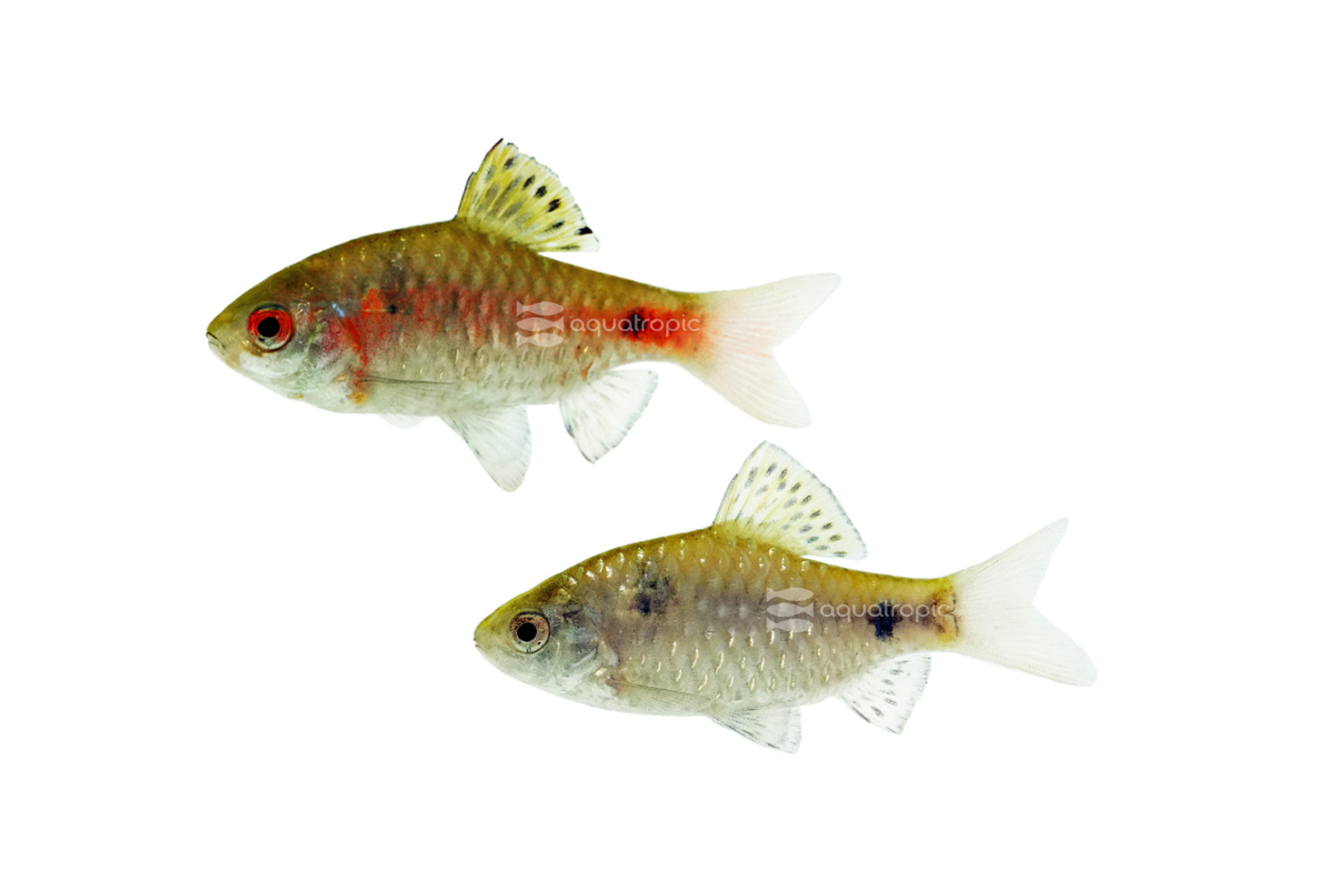Is The Odessa Barb the Perfect Fish?

What is the perfect fish? Peaceful? Pretty? Schooling? Easy to breed? Maybe none of these things makes your perfect fish, and the point here is that what makes a fish “perfect” is subjective and it's really going to depend on what you want. For those of you with a community freshwater aquarium, the Odessa Barb might make your list. The scientific binomial name is Pethia padamya. These dazzling fish are originally from the mountains of Myanmar (once called Burma) where it lived in high altitude, very alkaline streams. It got its name from the Ukranian City of Odessa, where it was (allegedly) originally bred in captivity on a commercial scale, which is when everyone became familiar with it sometime in the 1970's. It wasn't until the 2000s that a wild population was verified in its home range and a scientific name given.
This is perhaps the prettiest Barb available, with an iridescent blue body, a striking red stripe down the middle, ending in full red tail, and a bright yellow dorsal fin. Females are similar color wise, but more silvery and slightly paler overall; they're gorgeous. They stay small too, with the vast majority never getting longer than two inches. Even though we suggest keeping them in mixed sex groups of at least eight you could do this in a tank as small as 20 gallons. Dark décor and substrate will help them show their best colors. Planted displays with some driftwoods are perfect. They will also do well in tanks that have some flow and can be a beautiful addition to hill stream type aquariums as the flow they'll tolerate can be surprisingly brisk. Most specimens you'll come across will be aquacultured, and so they aren't going to be overly picky about exact water chemistry parameters unless your display is extreme in pH or hardness values. On average, we suggest a pH between 6.5 and 7.5, with a temp in the 70s to low 80s. Colors will pop best in tanks that are slightly dimmer, and many hobbyists will plan displays with a lot of driftwood, overhangs or some floating plants to help shade their fish.
As we got into briefly, Odessa Barbs do much better when kept in groups of at least eight with a ratio of at least 2 females for every male, more is fine. They'll also be bolder in aquariums that feature other schooling fishlike Tetras. They'll mostly ignore bottom dwellers like Corys and Plecos which make good tank mates. Other good choices could be Rainbowfish, Danios, Siamese Algae Eaters, Catfish, the more peaceful Cichlids and other Barbs; the list doesn't end here they're a great fit for a huge variety of fish. Like most other Barbs, they will eat most invertebrates they can get in their mouths, making them great fish to have if you have a nuisance snail issue, but not the best for tanks with decorative shrimp that you'd like to keep.
Odessa Barbs, even the wild ones, are very easy to feed and with aquacultured specimens, they'll happily take the Nutramar Freshwater Complete Pellet right away. Regular readers of this column already know that this is a very clean, high-quality food, with a high protein level and a broad spectrum of nutrients and minerals. We trust it and feed only Nutramar Pellets in house to everything that will take one and you should too. Wild fish might need some frozen food initially, but it won't be long before they take the pellets as well. In house we feed Gamma Mysis, Rotifers, Brine, Daphnia and Mini-Bloodworms to both wild fish and aquacultured specimens for diet variety.
As you'll be keeping them in groups, your fish are pretty likely to breed in your display. When the males start to court the females, the activity is amazing and engaging. If you have plenty of cover, it's reasonably likely that you'll see babies just start showing up without any intervention on your behalf, though the majority of them will get eaten if you aren't taking steps to protect the fry. For those of you interested in keeping them specifically to breed, these fish are on the easy end of the spectrum. The adults need to be separated from the eggs, which can be accomplished by using a net over the bottom that is fine enough to let the eggs through but not allow the adults to eat them. Aquarists also use marbles, mops and fine leaved plants to hide the eggs. Once the eggs are laid the adults should be moved to another tank. Eggs will hatch in a day or two. The fry is small initially and will need to be fed infusoria. We have an article here on the website about how to culture this for yourselves and that can be found here: https://www.qualitymarine.com/news/home-grown-food-infusoria-edition/. After about a week, they can be fed larger foods like microworm (there's an article here for culturing these too), or baby brine shrimp, and a week or so later they should be big enough to accept powdered pellets or flake.
Odessa Barbs aren't the new hotness, but they are the old school gorgeousness. Mix them with some other iridescent fish in a densely planted tank and watch your friends go oooooh, and they will. Throw them in a Hillstream display with an ornate Butterfly Loach and some Rummynose and you'll get that same reaction. They're sized well, they're peaceful, they're active and they're flat out breathtaking to look at. When we talk about perfect fish these are always in the conversation, and it's pretty easy to see why. If you're like us and are looking for something stunning to add to your community tank, these should be high on your list. Ask your LFS about getting you some Odessa Barbs from Aquatropic!